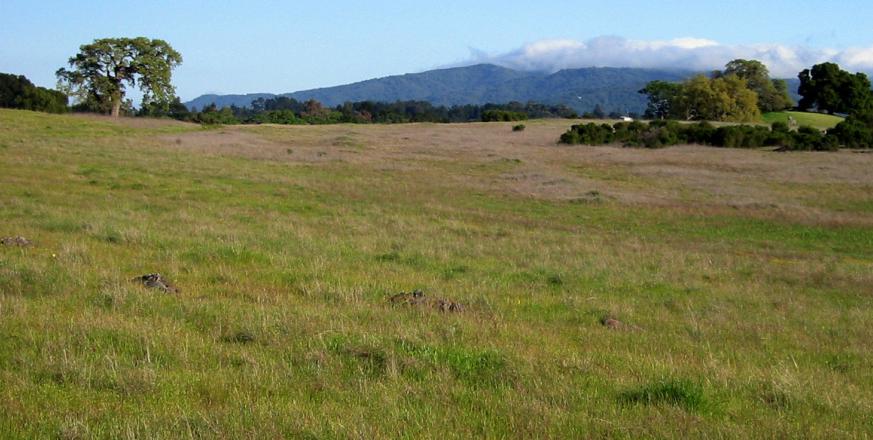In three new publications, JRBP studies contribute to large-scale and long-term perspectives on climate change

The Jasper Ridge Global Change Experiment reports in a new publication that net primary production (NPP) of California grassland is highest when annual rainfall and temperature are near long-term averages, and falls off under more extreme conditions such as those expected with climate change. The analysis, by Kai Zhu and others, was possible because of a second finding: NPP responses to rainfall and temperature did not depend on whether it was early or late in the 17-year experiment, and thus NPP could be analyzed in response to a gradient of conditions created by both annual environmental variation and experimental treatments, rather than as a time series.
Another new publication finds that this kind of time-independence in the response of NPP is common. Analyzing data from 22 global change experiments in 10 countries, Louise Andresen and others report that in some ecosystems, responses to global change factors intensified, weakened, or changed direction over time, but the most common pattern was that early and late responses were similar, as observed at Jasper Ridge. Certain ecosystem properties, such as mean annual temperature, may predict whether responses to global change are time-dependent.
In a third publication Koen Hufkens and others predict the future productivity of grasslands based on a combined analysis of climate models and camera-based monitoring of phenology by a national network of “phenocams,” including one at JRBP. They conclude that in a warmer, drier future, productivity will increase across much of the North American grassland biome, but not in Texas and much of the historic dust bowl, or in California grasslands west of the Sierras—a result consistent the findings of Kai Zhu et al.



